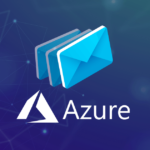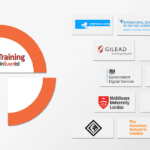How to use Azure Logic Apps’ SAP integration capabilities
SAP software is often at the core of business IT, powering processes across finance, HR, and marketing. But while integrating SAP was once a time-consuming task, Azure Logic Apps’ SAP integration features are accelerating this process. In this article we will summarise the key features that make Azure SAP integration cost-effective, fast, and flexible.
Azure SAP integration approaches
Azure’s modular flexibility allows you to choose the integration approach that best suits your requirements. The two main approaches to Azure Logic Apps SAP integration are via point-to-point integration or with an integration layer.
Point-to-point: In point-to-point integration, you use Azure to build a single connection between SAP and one other application. This approach is expensive and time-consuming in the long run, because SAP software is constantly evolving. When the SAP landscape changes, you’ll have to redo those point-to-point integrations.
Integration layer: Building an integration layer is the best way to connect SAP to multiple other applications, whether on-premises or in the cloud. Because each application speaks a slightly different language, the integration layer has to act like a translator between them all. You can plug applications into the integration layer and unplug them as needed, with little time or expense. An integration layer is typically more reliable than point-to-point and has reduced maintenance costs. Your business will gain the ability to adopt new technologies without worrying about a complex integration process.
To learn more about the advantages of an integration layer, see our article “Unlocking the benefits of API integration over point-to-point integration”.
Key Azure services for SAP integration
To build an integration layer that connects SAP to multiple applications, you’ll need these four key iPaaS elements.
Azure Logic Apps: Using its SAP connector, Logic Apps provides integration process orchestration between SAP and non-SAP applications. You can use the connector to integrate with SAP’s on-premises R/3 and ECC systems, as well as with the newer HANA-based SAP systems. This is valid for both on-premises HANA systems and for those in the cloud.
Azure Service Bus: This cloud-based messaging platform is useful for all kinds of asynchronous data transfer between SAP and other applications, services, and devices.
Azure Data Factory: Has the ability to copy data and lookup data from SAP ECC as well as any object exposed by SAP ECC.
Azure Event Grid: Event Grid is a way of simplifying event-based applications and managing the routing of events from any source, to any destination.
Data formats in Azure Logic Apps SAP integration
The Azure Logic Apps SAP connector uses three systems to connect SAP and non-SAP applications: Intermediate Document (IDoc), Business Application Programming Interface (BAPI), and Remote Function Call (RFC). A combination of these three formats enables you to integrate SAP with virtually any cloud or on-premises system.
Intermediate Document (IDoc): This is a format for electronic data exchange between SAP-based files and files from other applications. You might use IDocs to transfer data between your business and a partner who uses industry-standard formats such as EDIFACT or ANSI. Examples of IDoc usage include order processing and invoice processing.
Business Application Programming Interface (BAPI): BAPI is a remote-enabled function module for mySAP. With a BAPI call, you can request role-based information from SAP systems such as an ERP. These roles include customer relationship management (CRM), supply chain management (SCM), e-procurement, business intelligence, product lifecycle management, human resources, and finance.
Remote Function Call (RFC): This standard interface enables data transfer between SAP systems.
Operations of the Azure Logic Apps SAP connector
Using the three data formats discussed above, the Azure Logic Apps SAP connector can perform three key operations.
Send to SAP: This operation can send either IDoc, BAPI, or RFC, with a payload in XML format. Once complete, the operation returns a GUID or a response configured in the SAP system. If the operation fails. the response includes an error code and details of the error.
Receive from SAP: This webhook-based operation is triggered when the gateway receives an IDOC or BAPI function call from the target SAP system.
Generate Schemas: This operation enables easier data mapping of the SAP interface. In this way you can create an IDoc, RFC, or BAPI message structure for the target SAP system.
Real-life uses for Azure Logic Apps SAP integration
As an SAP Partner with in-depth experience of Azure, Influential Software has helped many clients achieve Azure Logic Apps SAP integration. To understand how Azure SAP integration empowers real-life businesses, see the following case studies:


